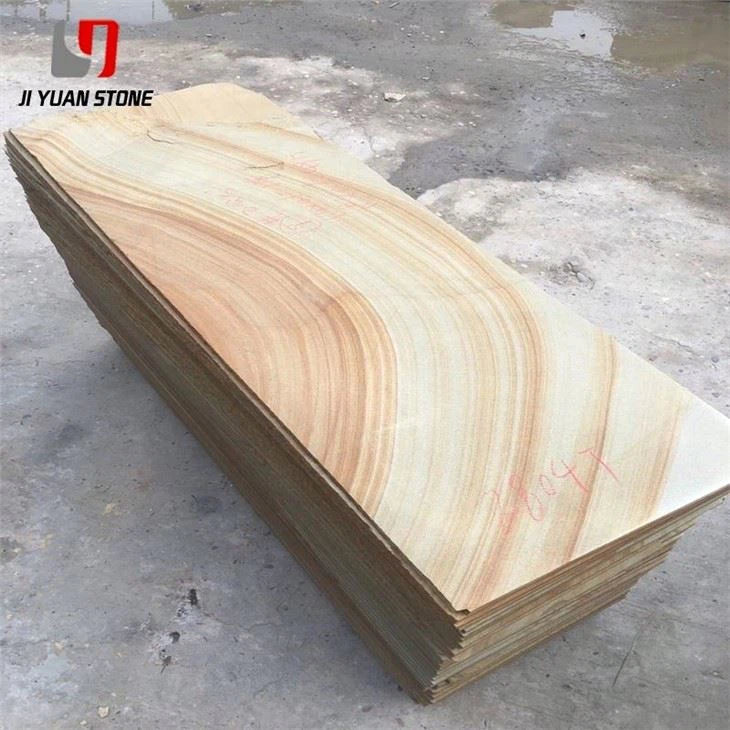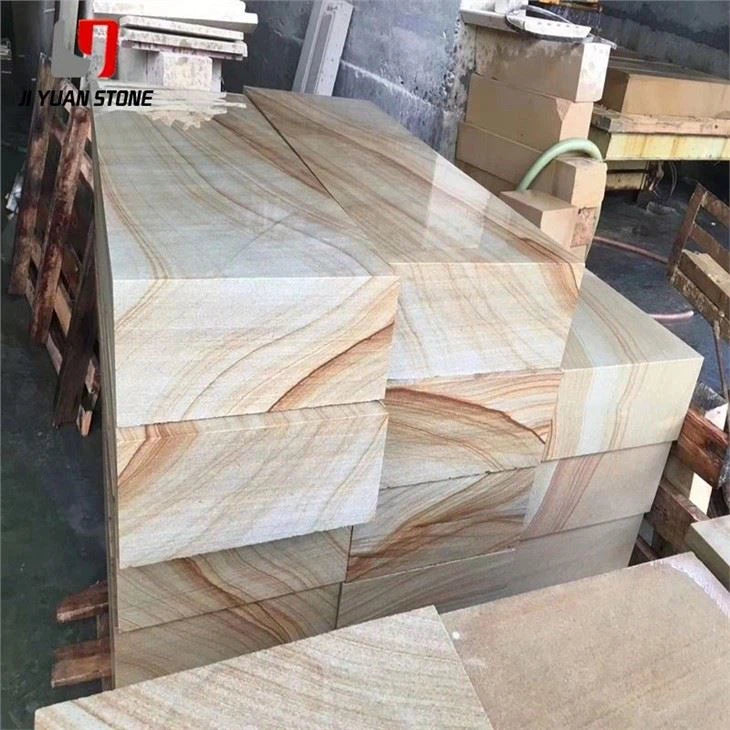Rainbow Sandstone
Rainbow Sandstone
Rainbow Sandstone – Vibrant Natural Stone with Lasting Elegance & Easy Restoration
Enhance your outdoor space with Rainbow Sandstone. This natural stone boasts a unique rainbow coloration, adding a stunning and vibrant touch to any patio, walkway, or garden. Made to last, this durable sandstone is sure to impress and elevate your landscape.
| Feature | Details |
|---|---|
| Material | Natural Sandstone |
| Surface Finished | Honed,Flamed,Bush-hammered,Brushed,Nature,Mushroom,Sawn etc |
| Finished Products | Floor tiles, Wall cladding, Countertops, Windowsills, Special-shaped tiles, Small slabs, Swimming pool, steps, wall panel, flooring, veneers, slabs, coping tiles, etc |
| Color | Yellow,black,white,red,purple wood,green,grey,rainbow etc |
| Finished | Honed, Split, Sandblasted, Sawn, Antiqued, Pineapple, etc. |
| Dimension |
|
| Usage | Interior & Exterior Decoration |
| Quality Control |
Thickness Tolerance:+/-0.5mm,+/-1mm; All Products Checked by Experienced QC |
| MOQ | Welcome Small Trail Orders |
| Size | Customized Pls contact us for the newest catalog of sandstone,marble,granite,quartz,mosaic,limestone,travertine etc |
| Sample | Contact Us For Free Samples |
| Package | Standard Exporting Seaworthy Package ( Inner: Plastic Film and Foam; Outer: strong seaworthy wood Crates or Pallets.)Payment |
| Payment | T/T, L/C, Escrow, Western Union |
| Delivery | Within 2 Weeks After Deposit |
Bring color, texture, and timeless elegance to your space with Rainbow Sandstone, a premium natural stone known for its rich wave-like striations in earthy tones. Whether used for countertops, walls, or flooring, its bold yet natural patterns make it a striking choice for both residential and commercial applications.
Rainbow Sandstone not only delivers aesthetic appeal but also offers practical durability and restorability—making it a wise investment for long-term beauty.
🌟 Rainbow Sandstone Surface Maintenance and Restoration
Even the most resilient natural stones need proper care. Rainbow Sandstone can be restored to its original glory when maintained correctly. Here's everything you need to know:
🚫 Causes of Pollution and Corrosion
1. Alkaline or Acid Cleaning Agents
Household cleaners such as hand soap, toilet cleaners, or harsh sanitizers may seem harmless, but when spilled on the sandstone surface, they cause slow corrosion.
Damage results:
- White spots
- Gloss reduction
- Surface wear and dullness
2. Water and Water-Based Pollutants
If the stone’s protective layer is compromised—especially by alkaline products—moisture and pollutants can seep in.
Visible effects:
- Rusty yellow patches
- Black stains
- Deep discoloration and surface breakdown
🔧 Restoration Process for Corroded Rainbow Sandstone
When significant corrosion is present, follow this expert 4-step process:
1️⃣ Grinding and Smoothing
- Use a dry polishing pad with a portable polishing machine
- Gradually grind away the damaged surface
- Reveal a fresh, smooth layer beneath
2️⃣ Applying Penetration Protection Agent
- Brush on a penetrating protective agent
- Prevents further water and stain infiltration
- Prepares surface for effective recrystallization
3️⃣ Crystal Polishing
- Use a white scouring pad with JT-310 plus nano powder (1:1 mix)
- Perform two rounds of polishing
- Boosts anti-fouling resistance and reverses whitening effects from non-neutral cleaners
4️⃣ Final Polishing
- Apply Polishing Care Agent A
- Enhances color vibrancy and surface depth
- Improves surface dryness and moisture resistance
✅ Why Choose Rainbow Sandstone?
- Natural Multicolor Aesthetic: Unique rainbow-like patterns for unforgettable style
- Durable & Restorable: Can be refurbished even after heavy corrosion
- Indoor & Outdoor Use: Perfect for countertops, walkways, facades, and feature walls
- Eco-Friendly: Naturally sourced and minimally processed
- Enhanced Surface Protection: Compatible with modern polishing and sealing agents
📌 Common Applications
- Bathroom & kitchen countertops
- Wall cladding and decorative facades
- Outdoor garden paths and patio steps
- Commercial lobbies and feature walls
📐 Product Specifications
- Material: Natural Sandstone
- Finish: Polished / Honed / Brushed (customizable)
- Available Sizes: Standard and custom cuts
- Color Tone: Multicolor swirls – yellows, browns, reds, and purples
🛒 Order Now
Elevate your project with the luxurious yet low-maintenance Rainbow Sandstone. For customization, bulk orders, or restoration guidance, contact our expert team today.
Share



















